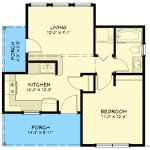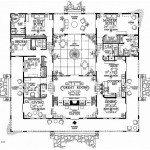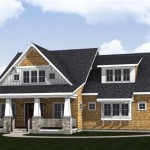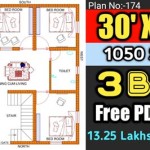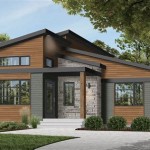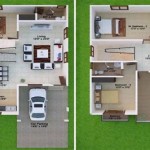Plans of Small Houses
The increasing interest in minimalist living, coupled with economic factors and environmental concerns, has propelled the popularity of small house plans. These plans offer a unique blend of affordability, efficiency, and sustainability, appealing to a wide range of individuals from young professionals to retirees. Understanding the nuances of small house plans is crucial to effectively leverage their benefits.
Key Considerations for Small House Plans
Prior to selecting a small house plan, careful consideration of several factors is necessary. This ensures the chosen plan effectively meets the specific needs and lifestyle of the occupant(s). Overlooking these factors can lead to design compromises and functionality issues.
* Lifestyle: How will the space be used? Consider daily routines, hobbies, and the need for guest accommodations. * Budget: Establish a realistic budget that includes not only construction costs but also land acquisition, permits, and potential cost overruns. * Location: Local building codes and zoning regulations will significantly influence permissible house sizes and designs. * Lot Size and Topography: The chosen plan must be compatible with the available lot size and its topographical features.
Types of Small House Plans
Small house plans encompass a diverse range of architectural styles and layouts. Understanding the different types can assist in selecting a plan that best reflects personal preferences and practical requirements.
* Tiny Houses: Typically under 400 square feet, these prioritize mobility and minimalism. * Cabin Plans: Often featuring rustic designs and natural materials, these are well-suited for rural settings. * Cottage Plans: Charming and compact, cottage plans offer a cozy and traditional aesthetic. * Bungalow Plans: Characterized by single-story layouts and open floor plans, bungalows offer a blend of space and efficiency. * Modern Small House Plans: Emphasizing clean lines and functional design, these plans prioritize contemporary aesthetics.
Maximizing Space in Small House Plans
Effective space utilization is paramount in small house designs. Strategic planning and innovative design features can create the illusion of spaciousness and enhance functionality.
* Open Floor Plans: Removing unnecessary walls creates a sense of openness and allows for flexible furniture arrangements. * Multi-functional Furniture: Incorporating furniture with built-in storage or convertible functionalities optimizes space usage. * Vertical Space Utilization: High ceilings and lofted areas can significantly increase usable square footage. * Built-in Storage: Maximizing built-in storage solutions, such as under-stair storage and wall niches, minimizes clutter and frees up valuable floor space.
Benefits of Choosing Small House Plans
Opting for a small house plan presents numerous advantages, both financially and environmentally.
* Reduced Construction Costs: Smaller footprints translate to lower material and labor costs during construction. * Lower Utility Bills: Heating and cooling smaller spaces requires less energy, resulting in reduced utility expenses. * Reduced Maintenance: Smaller homes typically require less upkeep and maintenance, saving time and money. * Increased Sustainability: Smaller living spaces inherently reduce environmental impact through reduced resource consumption.
Essential Elements of Small House Design
Certain design elements are crucial to optimizing functionality and comfort within a small house.
* Natural Light: Ample natural light creates an airy and spacious atmosphere while reducing the need for artificial lighting. * Ventilation: Proper ventilation is essential to maintaining healthy air quality and preventing moisture buildup. * Efficient Layout: A well-designed layout promotes smooth traffic flow and minimizes wasted space. * Outdoor Living Spaces: Extending living areas outdoors can create a greater sense of space and provide opportunities for recreation and relaxation.
Choosing the Right Plan
Selecting the right small house plan requires careful evaluation of individual needs and priorities. Consulting with experienced architects and builders can provide valuable guidance throughout the process.
* Research and Comparison: Thoroughly research different plans and compare their features, layouts, and costs. * Professional Consultation: Seek advice from architects and builders to ensure the chosen plan is structurally sound and meets local building codes. * Customization Options: Consider the possibility of customizing a plan to better suit individual needs and preferences.
Building Materials for Small Houses
The choice of building materials plays a crucial role in the overall cost, durability, and aesthetic of a small house.
* Cost-Effective Options: Explore cost-effective materials such as prefabricated panels or recycled materials. * Sustainable Choices: Prioritize sustainable materials like bamboo, reclaimed wood, and other eco-friendly options. * Durability and Maintenance: Consider the long-term durability and maintenance requirements of different materials.
Legal and Regulatory Considerations
Navigating the legal and regulatory landscape is essential for a smooth and compliant building process.
* Building Permits: Obtain the necessary building permits from local authorities before commencing construction. * Zoning Regulations: Ensure compliance with local zoning regulations regarding setbacks, building height restrictions, and other requirements. * HOA Restrictions: If building within a homeowners association, verify compliance with any applicable HOA regulations.

Small House Design 2024001 Pinoy Eplans Floor Plans

These Small House Plans Pack A Lot Of Punch Houseplans Blog Com

Small House Plans With Pictures Houseplans Blog Com

Small House Plans Economical Floor

Pin On Small Houses

Small House Plan Examples

18 Small House Designs With Floor Plans And Decors

Longshoremans Daughter Small House Floor Plans Tiny

Small House Plans With Pictures Houseplans Blog Com

27 Adorable Free Tiny House Floor Plans Craft Mart

